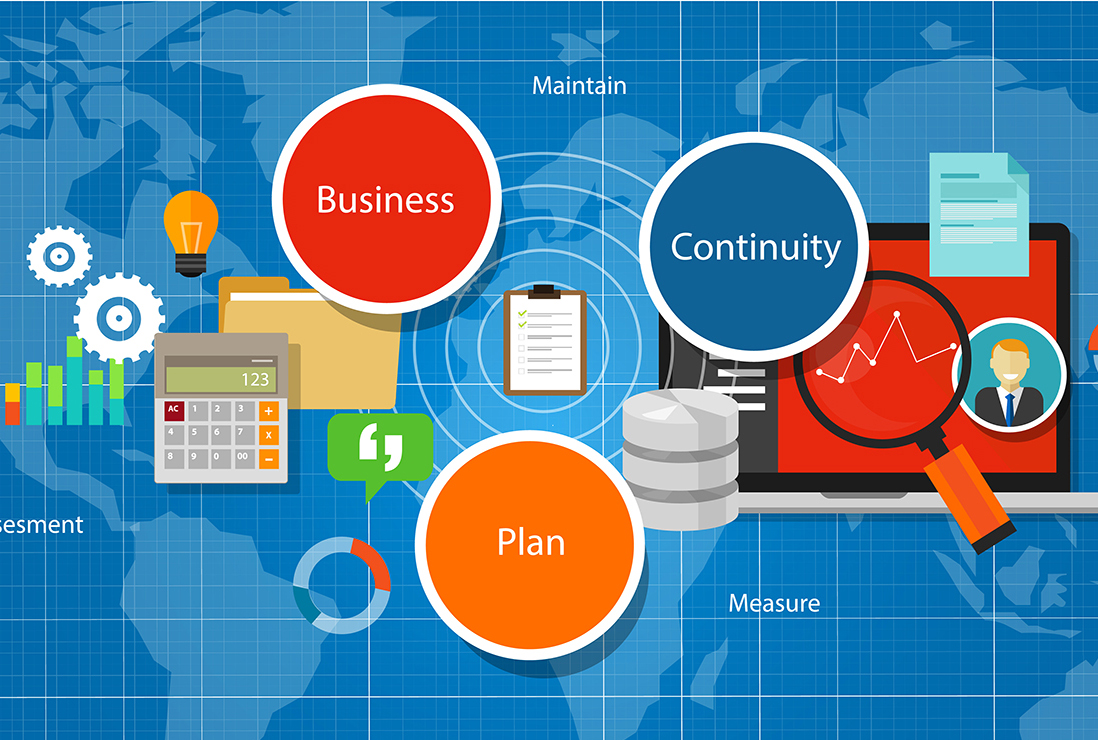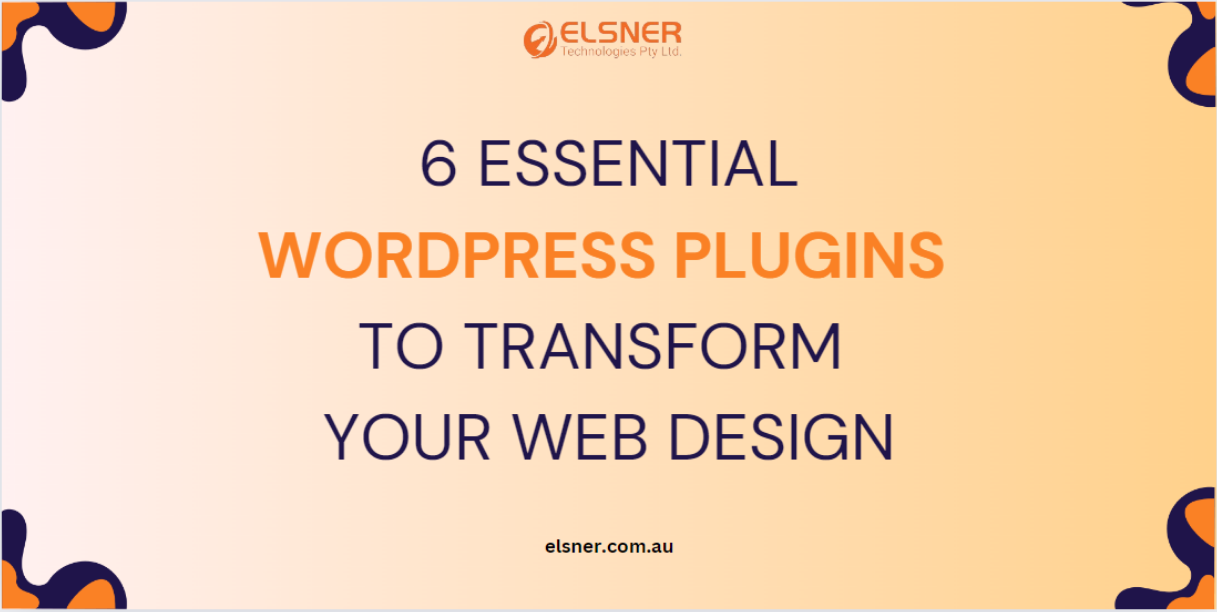RFP Word Templates: Simplify Your Response Writing
Did you know that companies using RFP templates can reduce their response time by up to 40%? When you’re juggling multiple proposals, this time-saving strategy can be a game-changer. RFP Word Templates not only streamline your process but also help maintain consistency and professionalism across all your documents. Curious about how these templates can enhance collaboration within your team and ensure compliance with client requirements? There’s more to uncover about the key features and customization options that could significantly boost your chances of securing valuable contracts.
Benefits of Using Templates
Leveraging RFP word templates can streamline your proposal process, saving both time and effort while ensuring consistency and professionalism. By utilizing these templates, you can focus on crafting compelling content rather than formatting and structure. This strategic approach to time management allows your team to concentrate on what truly matters: creating a winning proposal.
When you use RFP templates, you’re not just saving time; you’re gaining a competitive advantage. Templates provide a standardized format, which means you can quickly respond to multiple RFPs without compromising on quality. This speed and efficiency can be the difference between landing a contract and losing out to a faster competitor.
Moreover, templates ensure that all essential elements are included in your proposal. They guide you through each section, ensuring no crucial details are overlooked. This thoroughness not only enhances the quality of your submission but also boosts your chances of success.
In essence, RFP word templates are more than just a time-saving tool. They’re a strategic asset that can elevate your proposal game, giving you an edge over competitors and maximizing your chances of securing valuable contracts.
Key Features to Look For
When selecting RFP word templates, prioritize features that enhance customization, ease of use, and comprehensive guidance. Your template selection should focus on those that allow you to tailor content to specific project needs without sacrificing format consistency.
A customizable template ensures that you can adapt it to the unique requirements of each RFP, while retaining a professional appearance.
Ease of use is another critical feature. Look for templates that have intuitive layouts and clear instructions. This makes it simpler for you to input information accurately and efficiently, saving valuable time.
Templates with built-in prompts and sections for key details ensure that you don’t miss any crucial information.
Comprehensive guidance is indispensable. Choose templates that provide detailed instructions or examples within the document. This helps you understand the expectations and standards required, increasing your chances of a successful response.
Additionally, built-in formatting ensures that your document maintains a consistent and professional look across all sections.
Customizing Your Template
Start customizing your template by identifying the specific sections that need tailoring to align with your project’s unique requirements. Begin with the scope of work, deliverables, and timeline. These are crucial for setting expectations and showcasing your ability to meet the client’s needs.
Template personalization is key. Modify headers to reflect your organization’s branding, and adjust the language to match the tone of your project. This creates a cohesive and professional appearance. Use Formatting tips to ensure readability. Employ consistent fonts, headings, and bullet points. Highlight critical information with bold or italics to draw the reader’s attention.
Integrate visuals where applicable. Diagrams, charts, and tables can simplify complex data, making your response more compelling. Don’t forget to include a cover page and table of contents. They provide a polished first impression and help clients navigate your document.
Pay attention to alignment and spacing. Properly aligned text with adequate whitespace enhances readability and keeps the document neat. Customize margins and headers to fit your content without cluttering the page.
Common Mistakes to Avoid
In order to create an effective RFP response, you must avoid common mistakes that can undermine your credibility and lessen your chances of securing the bid. First and foremost, watch out for grammar errors. These can instantly erode your professionalism and make evaluators question your attention to detail. Use tools like spell-check and grammar-check, but also take the time to manually review your content. A polished response speaks volumes about your commitment to quality.
Another critical pitfall is providing vague responses. When you’re vague, you fail to demonstrate a deep understanding of the RFP requirements. Instead, be precise and specific. Clearly outline how your solutions meet the client’s needs, supported by data or examples. Don’t assume the evaluators will fill in the gaps; they won’t.
Additionally, ensure you strictly adhere to the RFP guidelines. Missing or misinterpreting requirements can disqualify your submission. Double-check every section to verify you’ve addressed each criterion thoroughly.
Enhancing Readability
Ensuring your RFP response is easy to read will significantly boost your chances of making a lasting impression on evaluators. Start by focusing on font selection. Choose a clean, professional font like Arial or Calibri, and stick with a font size that’s easy on the eyes—typically 11 or 12 points. Avoid overly decorative fonts, as they can be distracting and hard to read.
Next, establish a clear visual hierarchy. Use headings, subheadings, and bullet points to break up text and guide the reader through your response. This helps evaluators quickly locate key information and understand the structure of your proposal. Bold or italicize important points, but use these tools sparingly to maintain their impact.
White space is another critical element. Don’t overcrowd your document; ample margins and spacing between paragraphs can make your response look more inviting and less intimidating. This not only enhances readability but also makes your content easier to digest.
Incorporating Brand Identity
Consistently incorporating your brand identity into your RFP responses is a strategic way to reinforce your company’s image and make your proposal more memorable. Start by ensuring that your logo placement is prominent yet tasteful. Position it on the cover page, headers, and footers, making it easy for reviewers to associate the proposal with your brand at a glance.
Next, leverage your brand’s color schemes throughout the document. Use your primary brand colors for headings, subheadings, and key sections to create a cohesive and professional appearance. Subtly integrate secondary colors in charts, graphs, and other visual elements to maintain visual interest without overwhelming the reader.
Don’t forget about typography—select fonts that reflect your brand’s personality and ensure consistency across all sections. A well-chosen typeface can convey professionalism and attention to detail.
When you align your RFP responses with your brand identity, you’re not just submitting a proposal; you’re presenting a unified, polished image of your company. This strategic approach helps your submission stand out and reinforces your brand’s values and reliability, making it more likely that your proposal will leave a lasting impression.
Ensuring Compliance
Meeting compliance requirements in your RFP responses is crucial for demonstrating your company’s reliability and understanding of the client’s needs. Using RFP word templates can streamline this process, ensuring you meet all regulatory standards and legal requirements without missing critical details. By adhering to these standards, you not only enhance your credibility but also minimize risks associated with non-compliance.
First, make sure your templates are up-to-date with current regulatory standards. This involves routinely reviewing and updating them to reflect any changes in laws or industry guidelines. Doing so ensures that you’re always prepared to meet the most stringent requirements.
Next, incorporate sections in your templates specifically designed to address legal requirements. These sections should cover everything from data protection policies to industry-specific regulations. By having these areas pre-formatted, you won’t overlook critical compliance elements under tight deadlines.
Additionally, include a checklist within your template to verify that all necessary compliance points are covered before submission. This proactive approach minimizes errors and ensures that every response you submit is fully compliant, giving you a competitive edge.
Leveraging RFP word templates for compliance can significantly improve your chances of winning contracts by showcasing your meticulous attention to detail and commitment to legal and regulatory standards.
Streamlining Collaboration
Streamlining collaboration in your RFP responses is essential for maximizing efficiency and ensuring cohesive, high-quality outputs. By leveraging effective collaboration tools and fostering positive team dynamics, you can transform the often chaotic and fragmented process of drafting RFP responses into a well-oiled machine.
First, consider adopting collaboration tools that enable real-time editing and communication. These tools not only allow multiple team members to contribute simultaneously but also ensure that everyone stays on the same page, reducing the risk of duplicated efforts or missed information. Utilize tools that support version control to track changes and maintain document integrity.
Next, focus on enhancing team dynamics. Clearly define roles and responsibilities, so each team member knows their specific tasks. This clarity minimizes confusion and ensures accountability. Regular check-ins and progress updates keep everyone aligned with the project timeline and objectives.
Encourage open communication within your team. Foster an environment where feedback is welcomed and constructive criticism is viewed as a pathway to improvement. This promotes a culture of continuous improvement and ensures that your RFP responses are as polished and persuasive as possible.
Tools and Resources
To enhance your RFP responses, leverage specialized tools and resources that streamline the process and elevate your final submission. By using automation tools, you can eliminate repetitive tasks and focus on crafting high-quality content. Automation tools help you quickly populate sections of your response with previously approved language, ensuring consistency and accuracy. They also allow you to set reminders and track deadlines, so you never miss a critical date.
Resource repositories play a crucial role in your RFP response strategy. These repositories store essential documents, templates, past responses, and key data points, making them readily accessible for future use. By centralizing these resources, you can quickly locate and incorporate relevant information, reducing the time spent searching for content and increasing team efficiency.
Invest in a robust database that includes everything from company policies to client testimonials. This not only speeds up the writing process but also ensures that your responses are comprehensive and well-supported. Additionally, consider using project management software to coordinate tasks, making it easier to manage contributions from multiple team members.
Utilizing these tools and resources effectively positions you to deliver polished, persuasive RFP responses that stand out to potential clients.
Conclusion
Using RFP Word Templates is like having a roadmap for your proposal journey. They help you stay on course, ensuring every detail is covered and presented professionally.
Don’t miss out on the chance to elevate your response writing—embrace these templates to enhance readability, incorporate your brand identity, and maintain strict compliance.
By streamlining collaboration and avoiding common pitfalls, you’ll boost your chances of securing valuable contracts.
Start now and transform your proposal process into a winning strategy.
5 Reasons To Join QA Automation Testing Courses
Today, industry professionals skilled at QA are in high demand for automation Testing. As businesses of all sizes strive to put high-quality applications out at an increasing pace, the need to come up with efficient, as well as effective, testing strategies has become a critical aspect. Attending the QA automation testing course can be a game-changer for one’s career, in this era of ever-changing technology and skills.
1.Accelerate Your Career Growth
The software development industry is always changing since new technologies, frameworks, and procedures emerge rapidly. To be a valuable resource for companies that want to hasten time to market while optimizing their tests, this will place you on the map! By acquiring this hands-on experience in automation testing education, you will not only keep current with growth but also continue working in an area that is badly needed.
Highly professional QA automation testing experience is a hot commodity in many industries, including IT, finance and healthcare and e-commerce. This kind of course can help make a huge difference to your career prospects, opening up entry-level jobs from which you can progress through increasingly senior positions like Test Automation Engineer; and even as high as QA Lead, Test Manager or Director of Quality Assurance. In fierce competition, if you want to earn a high salary and have stable jobs, then obtaining proper training plus certification is one way to achieve this.
2.Enhance Efficiency And Productivity
Manual testing is inefficient, time-consuming and prone to error. It is especially bad for large scale or frequently updated applications. With the help of sophisticated tools and techniques learned in automation testing courses, automating repetitive tasks enables sensibly to cut both time as well as required effort for testing. Test regression calls for more intensive technician work later on. By also automating smoke tests at the time that you release a product, you can free up resources for these more difficult and crucial testing tasks.
Ensuring the quality and reliability of software applications requires extensive test coverage. But testing every scenario in addition to edge cases by hand can be laborious along with a mistake-prone process. You can create and execute reliable test suites that can effectively as well as reliably run thousands of test cases by taking automation testing courses. This increased test coverage lowers the possibility of missing important flaws while also raising the overall quality of the program.
3. Foster Collaboration And Teamwork
The distinctions between development and testing have become hazier in contemporary software development approaches like Agile and DevOps. The significance of cooperation as well as communication between developers, and testers, as well as other stakeholders is emphasized in automation testing courses. QA specialists can easily integrate into cross-functional teams by grasping the development process and utilizing automation testing techniques. This fosters a collaborative environment that encourages shared ownership along with accountability for quality.
In order to facilitate both Continuous Integration and Continuous Delivery (CI/CD) configurations, automated testing is a must. By learning how to create along with run automated tests which fit well with continuous integration as well as a delivery pipeline (CI/CD), you can become an indispensable part of the software delivery process. Your ability to build automated test suites, and run tests concurrently, alongside providing real-time results to team’s aids in problem identification and early resolution, resulting in a seamless and effective delivery cycle.
4.Cultivate Analytical And Problem-Solving Skills
Automation testing needs to be done in a methodical and organized way to be effective. You can learn frameworks as well as techniques for creating, and executing, as well as managing automated test suites in automation testing courses. You’ll gain knowledge of best practices for test case creation, and test data administration, in addition to test reporting, empowering you to tackle testing problems methodically and methodically.
Automated testing is more than just running scripts; it also entails requirement analysis, and scenario identification, along with result interpretation. These classes push you to use critical thinking, recognize possible problems, and come up with original solutions to challenging testing problems. You become an invaluable asset in identifying in addition to mitigating risks, ensuring the delivery of high-quality software products, by honing these analytical skills.
5.Embrace Continuous Learning And Professional Growth
Software testing is a field that is always changing, with new frameworks, and techniques, as well as tools appearing on a regular basis. While automation testing courses offer a strong foundation, they also stress the value of ongoing education and career advancement. Adopting a growth mindset will help you stay up to date with industry best practices, and adjust to new technologies, as well as improve your skills over time.
Courses on automation testing often cover a wide range of related subjects, including project management principles, programming languages, and software development methodologies, even though their main focus is on testing techniques in addition to tools. Your general understanding of the software development life cycle is improved by this exposure to a variety of domains, and it also creates opportunities for career advancement and specialization in areas that suit your interests as well as strong points.
Conclusion
By taking this course at Staragile not only can you get familiar with these desirable aptitudes, therefore making it possible for you yourself to work under employment opportunities. You can also help produce high-quality products that meet a criterion of completeness and perfection in addition to updating your ideas from programming languages into the constantly changing field of software development. Take on the challenge, and broaden your horizons, in addition to setting out on a path of ongoing education and development in the fascinating field of QA automation testing.
The Rise of Shared Office Spaces: A Comprehensive Guide for Entrepreneurs
In an era where innovation and flexibility are key, shared office spaces have revolutionized how entrepreneurs and startups operate. The rise of these dynamic work environments reflects a shift towards collaboration, cost-efficiency, and community.
This comprehensive guide delves into the growing trend of shared office spaces and offers valuable insights for entrepreneurs seeking to maximize their potential in these versatile settings.
The Benefits of Shared Office Spaces
Shared office spaces offer numerous benefits that cater specifically to the needs of modern entrepreneurs. Here are some key advantages:
1. Cost Efficiency:
Traditional office leases can be expensive, particularly for startups and small businesses. Shared office spaces provide a more affordable alternative, allowing entrepreneurs to access fully equipped workspaces without the burden of long-term leases and high overhead costs.
2. Networking Opportunities:
Shared office spaces foster a community of like-minded professionals, creating ample networking opportunities. Entrepreneurs can connect, collaborate, and share ideas with individuals from various industries. This networking can lead to partnerships, collaborations, and even new business ventures.
3. Flexibility and Scalability:
Flexibility is a hallmark of shared office spaces. Entrepreneurs can choose from various membership options, ranging from hot desks to private offices. This flexibility allows businesses to scale up or down based on their needs, providing the freedom to grow without the constraints of traditional office leases.
4. Access to Amenities:
Shared office spaces come with various amenities designed to support productivity and convenience. High-speed internet, meeting rooms, printing services, and communal areas are just a few available facilities. These amenities enable entrepreneurs to focus on their core business activities without worrying about office management.
Choosing the Right Shared Office Space
Selecting the ideal shared office space is crucial for entrepreneurs to create a conducive work environment. Here are some factors to consider:
1. Location:
Location plays a vital role in a business’s success. Entrepreneurs should choose a shared office space in a strategic location easily accessible to clients, partners, and employees. Proximity to public transportation, restaurants, and other essential services can enhance convenience and productivity.
2. Community and Culture:
The community and culture within a shared office space can significantly impact an entrepreneur’s experience. Choosing a space that aligns with one’s business values and goals is essential. A supportive and collaborative community can foster innovation and growth.
3. Services and Amenities:
Different shared office spaces offer varying levels of services and amenities. Entrepreneurs should assess their needs and choose a space with the necessary facilities to support their business operations. This could include meeting rooms, event spaces, and technical support.
4. Cost and Contract Terms:
Understanding the cost structure and contract terms is essential before committing to a shared office space. Entrepreneurs should compare pricing, membership options, and contract flexibility to ensure they select a space that fits their budget and long-term plans.
Shared office spaces have emerged as a game-changer for entrepreneurs, offering flexibility, cost-efficiency, and community. Entrepreneurs can thrive in these dynamic environments by carefully selecting a suitable space and adopting strategies to maximize productivity. Embracing the benefits of shared office space can lead to enhanced collaboration, innovation, and business growth. Additionally, short-term storage solutions can complement a shared office setup for those needing additional room for their business materials.
Unlocking Success: The Crucial Role of Enterprise Risk Management in Business Continuity
The risks affecting organizations today are numerous and demand proactive management especially as it pertains to the increasing competition characteristic of the modern landscape. However, due to the increasing complexity and volatility in most business environments, organizations, to overcome these challenges and thrive in the long term, it is crucial to implement an effective risk management strategy. ERM appears as an important approach to fulfilling the organization’s objectives by designing techniques for recognizing the implications and insignificance of risks.
The Fundamentals of Enterprise Risk Management (ERM)
Enterprise Risk Management (ERM) can thus be defined as the framework that defines processes, methods and tools that organizations use to identify, evaluate, rank and control risks within all areas of their operation. ERM can be considered as a concept that is different from isolated risk management that targets particular areas or kinds of risk, including finance and operation, as it views risks in the context of strategic goals and potential factors affecting their achievement. ERM hence empowers businesses to make the right decisions, implement the right choices as well and invest in opportunities for the overall growth of the business.
Identifying and Assessing Business Risks
Another important component of implementing Enterprise Risk Management (ERM) is the risk identification and evaluation of business risks. It involves assessing several numerical and non-numerical variables to determine their risks’ probability and potential consequences to an organization’s goals. Some risks can be financial related such as volatility, changes in regulations, cybersecurity threats, supply chain disruption or even disasters such as floods or hurricanes. Risk mapping is beneficial as it involves the identification of potential risks, their ranking, and the implementation of the corresponding preventive measures.
Integrating ERM into Organizational Strategy
Effective Enterprise Risk Management Traditional risk management on the other hand is performed outside the strategies and framework of an enterprise while modern ERM extends beyond mere risk mitigation to form the basis of enterprise strategy. The results of this approach will not only enhance the overall risk management culture in organizations but also improve its effectiveness through integration into decision-making processes by improving appropriate risk tolerance. These linkages ensure that the aspects of risk are accounted for during the formulation of organizational strategies, decisions on resource deployment and control and measurement activities.
Crafting a Comprehensive Risk Management Framework
It is necessary to establish an effective framework for ERM that can serve as a base for efficient implementation of methodical approaches to risk management within an organization. This framework typically includes the following components: risk identification, risk evaluation, risk treatment, risk review and Risk-Management-Kaizen. In this regard, a firm can intensify its capacity to prevent and handle potential risks by creating sound formal recommendations and protocols for the various steps of the risk management process.
Leadership’s Role in ERM Implementation
Leadership plays a critical role in driving the successful implementation of Enterprise Risk Management (ERM) within an organization. To be successful, ERM has to have the backing of the senior management of the organization which has to support the provision of the necessary resources for the sustainability and growth of an efficient ERM framework. This covers the executive management’s establishment of an organizational risk profile, including risk appetite and tolerance, as well as emphasis on integrity and scrutiny. This, coupled with frequent interaction with the organisation’s other stakeholders as well as encouraging cooperation with other personnel in the departments, the leadership can engineer an environment whereby risks are effectively managed as well as business continuity is effectively encouraged.
Technological Tools and Innovations in ERM
Some of the innovations through advanced technology in enterprise risk management services include improvements to offer tremendous advantages to organizations in responding to their risk management needs. From powerful risk assessment tools to risk monitoring and predictive analytics as well as machine learning algorithms, technological advancements help organizations to recognise new risks emerging in the market, automate the processes of monitoring the risk, and gain insights for decision-making. Moreover, since ERM nowadays significantly relies on digital platforms in terms of communications and collaboration of the stakeholders, it becomes possible to provide real-time risk reports and analyze them.
Case Studies: Successful ERM Practices in Leading Companies
Some of the most prominent firms explain the importance of proper ERM implementation to prevent or at least reduce some of the risks and manage continuity. For instance, many international companies together with companies within the financial and healthcare sectors have established sound ERM systems in a bid to manage the various legal requirements and exposure to shocks that may have a nasty impact on the balance sheets of these companies. In the same way, technology companies have employed ERM in compiling appropriate strategies for dealing with security threats, and for protecting crucial data to guarantee the firmness and functionality of their technology systems.
Future Trends in ERM and Business Continuity Planning
The future of Enterprise Risk Management Solutions and business continuity planning looks like this: As the dynamics of the business world continue to evolve, some trends will define the future of risk management: Integrated risk management: Involves the management of risks associated with the enterprise’s operations, which are involved in the provision of services to the clientele. Companies are becoming aware of the multi-faceted risks they face and evaluating methods to manage both strategic and operational risks, along with compliance risks if applicable. In addition, risks related to sustainability and more specifically ESG (Environmental, Social, and Governance) are leading organizations to integrate nonfinancial risks into ERM frameworks. By doing this, the firms can manage future risks and achieve strategic goals and objectives for sustainable growth.
Conclusion
ERM is critical because it creates an environment that allows the organisation to deal with uncertainty and exploit opportunities in support of strategy. Thus, with ERM as a part of management and governance function, implementing enterprise-wide risk management frameworks, and leveraging on the technologies; businesses can rise to the challenge, boost their resilience and foster sustainable growth. ERM culture, commitment, and active-employee engagement are some critical success factors that could be useful for the leadership to adopt to enable the firm to effectively implement ERM and keep risk management accountability as a foremost organizational priority. It also indicates that ERM will remain a critical element of business continuity and risk management strategies as more organizations build and rely on ever-improving approaches to risk management.
Top 5 Best Malaysian OEM Dietary Supplement Manufacturers in 2024
Looking to enter the flourishing dietary supplement market? Need a reliable partner to realize your vision? Your search ends here! This blog post reveals the top 5 Malaysian oem dietary supplement Manufacturers in 2024. Delve into quality, safety, and innovation as we discover how these manufacturers can enhance your brand and products. Join us on this thrilling journey toward success in the thriving OEM dietary supplements industry!
What is an OEM Dietary Supplement Manufacturer?
An OEM Dietary Supplement Manufacturer specializes in producing dietary supplements for other brands, offering services such as product development, formulation, manufacturing, and packaging under the client’s brand name. Acting as a one-stop solution for businesses aiming to enter or expand their presence in the supplement market, these manufacturers enable companies to save time and resources on production processes while focusing on marketing and sales strategies. They play a crucial role in ensuring quality control, regulatory compliance, and safety standards throughout the manufacturing process.
With access to state-of-the-art facilities and expertise in supplement production, OEM manufacturers help brands bring their unique formulations to life, facilitating the creation of custom products without the need for investing in manufacturing infrastructure.
Importance of Maintaining High Standards of Quality and Safety in Dietary Supplements
Quality and safety are important in dietary supplements, benefiting both manufacturers and consumers. These aspects are foundational for ensuring the effectiveness of products and instilling confidence in their usage.
Manufacturers must employ stringent quality control measures, including rigorous testing of raw materials and adherence to regulatory standards. This diligence guarantees the efficacy of supplements and fosters trust among consumers.
Equally critical is ensuring safety throughout the production process. Stringent guidelines must be followed to prevent contamination, accurately label products, and minimize potential health risks. Consumers deserve full transparency regarding the contents of the supplements they consume.
Prioritizing quality and safety not only underscores a manufacturer’s commitment to excellence but also safeguards the well-being of consumers who rely on these products for their health and wellness goals.
5 Best Malaysian OEM Dietary Supplement Manufacturers
Looking for the top Malaysian OEM dietary supplement manufacturers to partner with in 2024? Look no further! Here are the seven best companies leading the industry:
Top 1: Champion Dietary Supplement Manufacturer
Champion, a renowned Malaysian OEM manufacturer, excels in creating custom dietary supplements for businesses of all sizes without requiring high minimum order quantities (MOQs). Their high-quality supplements adhere to strict safety standards, produced in state-of-the-art facilities with advanced technology to ensure purity and efficacy. Champion’s offerings include vitamins, minerals, and specialty supplements.
Champion’s focus on innovation and customer satisfaction makes it a top choice for businesses entering the dietary supplement market. Their expert team helps clients realize their vision while maintaining rigorous quality control throughout production. Partnering with Champion provides a competitive edge in the growing supplement industry. Experience excellence with Champion Dietary Supplement Manufacturer today!
Top 2: Meelung
Meelung emerges as a premier choice for OEM dietary supplement manufacturing in Malaysia, renowned for its unwavering commitment to quality and safety. Their cutting-edge facilities and technology guarantee the production of top-tier supplements, with a team of experts dedicated to crafting innovative formulas tailored to individual client requirements.
What distinguishes Meelung is its meticulous attention to detail and a strong focus on delivering exceptional customer service.
They prioritize transparency and open communication, collaborating closely with clients throughout the manufacturing process. Whether you seek custom formulations or need assistance bringing existing products to market, Meelung offers the expertise and capabilities to thrive in the competitive dietary supplement industry.
Top 3: Shenzhen Lifeworth
Shenzhen Life Worth, a prominent OEM dietary supplement manufacturer in Malaysia, is renowned for its dedication to quality and innovation, distinguishing it in the industry. Focused on meeting clients’ needs with high-quality products, Shenzhen Life Worth’s state-of-the-art facilities and rigorous quality control measures ensure excellence in every product, earning them acclaim among customers and partners. Shenzhen Life Worth offers a diverse range of customizable solutions tailored to each client’s requirements, whether for developing new formulations or scaling up production.
Partnering with Shenzhen Life Worth provides access to cutting-edge technology, industry expertise, and an unwavering commitment to quality, making them a premier choice for OEM dietary supplement manufacturing. When considering an OEM manufacturer for dietary supplements, Shenzhen Life Worth emerges as a top contender.
Top 4: ORiBionature
ORiBionature emerges as a top-tier Malaysian OEM dietary supplement manufacturer in 2024, renowned for its unwavering commitment to quality and safety. Their dedication to producing premium supplements meeting the highest standards is evident in their state-of-the-art facilities and advanced technology, ensuring precision and care throughout the manufacturing process. Collaborating with ORiBionature means relying on a trustworthy partner dedicated to excellence, with a focus on innovation and customer satisfaction that sets them apart in the competitive supplement industry.
Backed by a team of experienced professionals, clients can expect tailored solutions aligned with their vision and requirements, whether launching new products or expanding existing lines. Choosing ORiBionature as your OEM manufacturer guarantees access to cutting-edge formulations developed through extensive research and development, positioning your brand for success in the market.
Top 5: OEM Company Malaysia
OEM Company Malaysia represents a category of companies focused on original equipment manufacturing. These companies produce parts and equipment marketed by other manufacturers, serving industries such as electronics, automotive, pharmaceuticals, and consumer goods. They provide manufacturing services based on client designs and specifications, playing a crucial role in the supply chain by allowing brands to outsource production while maintaining quality and efficiency.
How to Work with an OEM Manufacturer
Collaborating with an OEM dietary supplement manufacturer in Malaysia can be a rewarding experience if you approach it strategically. Clearly define your product requirements and expectations to ensure alignment from the start. Communication is key – maintain open and transparent dialogue throughout the process to address any concerns or modifications promptly.
When selecting an OEM manufacturer, consider their track record, certifications, capabilities, and production capacity. Conduct thorough research and due diligence before deciding to safeguard the quality of your supplements. Establishing a detailed contract outlining responsibilities, timelines, costs, and quality control measures is essential for clarity and accountability on both sides.
Maintain regular contact with your OEM manufacturer to stay updated on progress and address any issues promptly. Building a strong partnership based on trust and communication will contribute to a successful collaboration that benefits both parties in the long term.
Future of the OEM Dietary Supplement Industry in Malaysia
The future of the OEM dietary supplement industry in Malaysia looks promising, with a strong emphasis on quality, safety, and innovation. Manufacturers are committed to rigorous research, advanced production processes, and strict regulatory compliance, positioning them to meet the growing global demand for high-quality dietary supplements. Technological advancements are expected to enhance the capabilities of Malaysian OEM manufacturers, enabling more efficient and sophisticated production methods.
Collaboration with healthcare professionals and researchers will likely lead to the creation of more personalized and effective dietary supplements, catering to individual health needs. As Malaysian OEM manufacturers prioritize safety and reliability, they are poised to play a significant role in the global health and wellness market, offering innovative products that support consumers’ well-being worldwide.
What Are the Benefits and Risks of a Graduated Payment Mortgage?
A Graduated Payment Mortgage (GPM) is a type of home loan designed to help borrowers who expect their income to increase over time. It offers lower initial payments that gradually increase over a specified period before leveling off for the remainder of the loan term. This mortgage option can be particularly attractive to young professionals or those in the early stages of their careers.
However, like any financial product, GPMs come with both benefits and risks. Understanding these can help potential borrowers make informed decisions about whether this type of mortgage is right for them.
Benefits of a Graduated Payment Mortgage
Among the benefits of graduated payment mortgage include:
1. Lower Initial Payments:
One of the primary benefits of a GPM is the lower initial monthly payments. This feature makes homeownership more accessible for borrowers who may not yet have a high income but expect their financial situation to improve in the future. The lower initial payments can ease the financial burden during the early years of homeownership.
2. Affordability for First-Time Buyers:
A Graduated Payment Mortgage can be particularly beneficial for first-time homebuyers who are often younger and in the early stages of their careers. The lower starting payments can help them afford a home sooner than they might with a traditional fixed-rate mortgage, allowing them to build equity and benefit from potential property value appreciation.
3. Predictable Payment Increases:
Unlike adjustable-rate mortgages (ARMs), where payment changes can be unpredictable and tied to interest rate fluctuations, GPMs have scheduled and predictable payment increases. Borrowers know exactly how much their payments will rise and when, allowing for better financial planning and budgeting.
4. Qualification Flexibility:
The lower initial payments might help some borrowers qualify for a mortgage when they might not qualify for a higher initial payment required by a traditional mortgage. This can be especially advantageous for individuals with limited savings or those who are in professions with a clear trajectory for income growth, such as medical residents or junior associates in law firms.
5. Potential for Future Financial Stability:
cFor borrowers who anticipate steady income growth, a GPM allows them to secure a mortgage based on their current financial situation while planning for increased payments in the future. This can be a strategic choice for those who expect to be in a much stronger financial position within a few years.
Risks of a Graduated Payment Mortgage
1. Payment Shock:
The most significant risk associated with a GPM is the potential for “payment shock” when monthly payments increase. If a borrower’s income does not rise as expected, the higher payments could become unaffordable, leading to financial stress or even the risk of foreclosure.
2. Negative Amortization:
In the early years of a GPM, the monthly payments may be lower than the interest accruing on the loan. This can result in negative amortization, where the loan balance actually increases over time instead of decreasing. Borrowers need to understand this risk and be prepared for the possibility that their equity in the home may not grow as quickly as it would with other loan types.
3. Long-Term Costs:
While the initial lower payments can make a GPM attractive, the overall cost of the loan may be higher compared to a traditional fixed-rate mortgage. The scheduled increases in payments and potential for negative amortization can lead to higher total interest payments over the life of the loan.
4. Market and Economic Risks:
If the housing market declines or if there is an economic downturn, borrowers with a GPM might find themselves with a home that has decreased in value while still facing increasing mortgage payments. This situation can be financially challenging and may limit the borrower’s ability to refinance or sell the home without incurring a loss.
5. Qualification Criteria:
While GPMs can help some borrowers qualify for a mortgage, lenders still require assurance that the borrower will be able to handle the increased payments in the future. This means that borrowers may need to provide evidence of potential income growth, which can be difficult to predict accurately.
6. Refinancing Challenges:
Borrowers who find that their income does not increase as expected or who experience financial hardship might consider refinancing their GPM. However, refinancing can be challenging, especially if the borrower’s credit situation has worsened or if home values have decreased. Additionally, refinancing usually comes with its own set of costs and fees, which can add to the borrower’s financial burden.
Conclusion
A Graduated Payment Mortgage can be a beneficial option for borrowers who expect their income to rise significantly in the coming years. The lower initial payments make homeownership accessible and manageable in the short term, providing an opportunity to invest in property and build equity. However, the risks associated with GPMs, such as payment shock, negative amortization, and higher long-term costs, must be carefully considered. Borrowers need to realistically assess their future income potential and financial stability before committing to this type of mortgage.
Audit License in Dubai: Cost, Requirements, and Process
Dubai, renowned for its vibrant business environment and strategic location, is a prime destination for businesses and professionals from around the globe. Among the various professional licenses available, an audit license is particularly significant for those in the financial and consulting sectors. This article provides a comprehensive guide on the cost, requirements, and process for obtaining an audit license in Dubai.
Understanding the Importance of an Audit License
An audit license authorizes professionals and firms to perform auditing services, which include examining financial records, ensuring compliance with regulations, and providing financial advice. Holding an audit license enhances credibility and trust with clients, demonstrating a commitment to professionalism and adherence to regulatory standards.
Cost of Obtaining an Audit License
The cost of obtaining an audit license in Dubai can vary based on several factors, including the type of firm (mainland or free zone), the size of the firm, and additional services required. Here is a general breakdown of the costs involved:
- Registration Fee: The initial registration fee with the Department of Economic Development (DED) or the relevant free zone authority can range from AED 10,000 to AED 20,000.
- Trade Name Reservation Fee: Reserving a trade name typically costs around AED 600 to AED 1,200.
- Initial Approval Fee: The initial approval from DED or the free zone authority usually costs between AED 1,000 and AED 3,000.
- Office Rent: The cost of renting office space varies significantly depending on the location. In free zones, the cost might be included in the package offered, ranging from AED 15,000 to AED 50,000 annually.
- Professional License Fee: The fee for a professional license ranges from AED 5,000 to AED 15,000 annually.
- Visa Fees: If the firm will sponsor employees, visa fees per employee can range from AED 3,000 to AED 5,000.
- Additional Costs: These can include document attestation, notarization, and other administrative expenses, typically amounting to AED 2,000 to AED 5,000.
Overall, the total cost can range from AED 30,000 to AED 100,000 or more, depending on the specific requirements and scale of the auditing firm.
Requirements for an Audit License
To obtain an audit license in Dubai, certain requirements must be met:
- Educational Qualifications: The primary applicant must possess a relevant degree in accounting, finance, or a related field. Professional certifications such as CPA (Certified Public Accountant), ACCA (Association of Chartered Certified Accountants), or CMA (Certified Management Accountant) are highly regarded.
- Professional Experience: A minimum of 3-5 years of professional experience in auditing or accounting is typically required. For setting up a firm, the principal auditor should have substantial experience in the field.
- Business Plan: A detailed business plan outlining the services to be offered, target market, projected financials, and business strategy is essential.
- Office Space: Physical office space is a mandatory requirement. This can be in a free zone or on the mainland, depending on the business setup preference.
- Local Sponsorship: For mainland companies, a local sponsor (UAE national) holding 51% ownership is required. Free zones offer 100% foreign ownership.
- Initial Capital: Some free zones may require a minimum capital investment, typically starting from AED 50,000.
Process for Obtaining an Audit License
The process for obtaining an audit license in Dubai involves several steps:
- Choose a Business Structure:
- Decide whether to establish your firm in a free zone or on the mainland. Each has its own advantages and regulatory requirements.
- Trade Name Reservation:
- Reserve your trade name through the DED or the relevant free zone authority. Ensure the name complies with UAE naming regulations.
- Initial Approval:
- Obtain initial approval from the DED or the free zone authority. This involves submitting your business plan and other necessary documents.
- Office Space:
- Secure office space in a suitable location. For free zones, this might be included in the package. For mainland setups, lease agreements need to be notarized.
- Document Preparation:
- Prepare and notarize all required documents, including the Memorandum of Association (MOA), Articles of Association (AOA), and lease agreement.
- Submit Application:
- Submit your application along with the required documents and fees to the DED or the free zone authority.
- Receive License:
- Once your application is processed and approved, you will receive your professional audit license.
- Visa Processing:
- If applicable, process visas for you and your employees.
- Bank Account:
- Open a corporate bank account to manage your firm’s financial transactions.
Post-Licensing Compliance
After obtaining your audit license, it’s important to adhere to ongoing compliance requirements:
- Renewal: The audit license must be renewed annually. Ensure timely submission of renewal applications and payment of fees.
- Regulatory Compliance: Stay updated with local regulations and ensure compliance with all financial reporting and auditing standards.
- Continuous Professional Development: Engage in continuous professional development to maintain your professional certifications and stay current with industry best practices.
Conclusion
Obtaining an audit license in Dubai is a strategic move that can open doors to numerous business opportunities. While the process involves significant planning, adherence to regulatory requirements, and financial investment, the benefits of establishing a reputable auditing firm in Dubai are substantial. By understanding the costs, meeting the requirements, and following the outlined process, you can successfully navigate the path to becoming a licensed auditor in Dubai’s dynamic business landscape.
Streamline Your Business with S&OP Software
In the ever-evolving business landscape, companies constantly seek ways to enhance efficiency and maintain a competitive edge. Sales and Operations Planning (S&OP) software has emerged as a critical tool in achieving these goals. S&OP Software can streamline operations, improve decision-making, and drive overall business performance by integrating various business processes and fostering collaboration across departments.
In this blog, we’ll explore the benefits of S&OP software and how it can revolutionize your business operations.
What is S&OP Software?
S&OP software is a comprehensive tool designed to align sales and operations by integrating data from various sources within a business. It helps organizations forecast demand, plan inventory, manage supply chains, and optimize production schedules. This software provides a centralized platform where teams can collaborate, share insights, and make informed decisions based on real-time data.
Benefits of Implementing S&OP Software
(i). Improved Forecast Accuracy
One of the primary advantages of S&OP software is its ability to enhance forecast accuracy. By consolidating data from different departments, the software provides a holistic view of market trends and customer demand. This enables businesses to create more accurate and reliable forecasts, reducing the risk of overproduction or stockouts.
(ii). Enhanced Collaboration
S&OP software fosters collaboration across departments by providing a unified platform for sharing information and insights. Sales, marketing, finance, and operations teams can work together seamlessly, breaking down silos and ensuring that everyone is on the same page. This collaborative approach leads to better alignment of business goals and more cohesive strategies.
(iii). Optimized Inventory Management
Efficient inventory management is crucial for maintaining a healthy bottom line. S&OP software helps businesses optimize inventory levels by providing real-time visibility into stock and demand patterns. This ensures that companies can maintain the right amount of inventory, reducing carrying costs and minimizing the risk of obsolescence.
(iv). Better Decision-Making
With access to real-time data and advanced analytics, S&OP software empowers businesses to make better-informed decisions. The software provides actionable insights that help identify potential issues and opportunities, allowing companies to respond proactively. This leads to more strategic planning and improved overall performance.
Key Features of S&OP Software
(i). Real-Time Data Integration
S&OP software integrates data from various sources in real time, providing a comprehensive business view. This integration ensures that all departments can access the latest information, enabling them to make timely and accurate decisions.
(ii). Advanced Analytics
The software leverages advanced analytics to provide deep insights into market trends, customer behavior, and operational performance. These analytics help businesses identify patterns and make data-driven decisions that drive growth and efficiency.
(iii). Scenario Planning
S&OP software allows businesses to create and analyze different scenarios to understand the potential impact of various decisions. This feature helps companies prepare for different outcomes and develop contingency plans, ensuring they can tackle any challenges.
Streamlining your business with S&OP Software can significantly enhance efficiency, improve collaboration, and drive better decision-making. By providing a centralized platform for data integration, real-time insights, and advanced analytics, S&OP software enables businesses to stay agile and competitive in today’s dynamic market. Investing in this powerful tool can help your organization achieve outstanding operational excellence and sustained growth.
Embrace the power of S&OP software and take your business operations to the next level.
What Landlords Need to Know About the Law in Missouri
As a landlord in the state of Missouri, it is critical to stay aware of both federal and state regulations that might affect the way that you run your rental business. Regulations on rent, evictions, fair housing, and more all affect the way you can operate your rentals.
This article covers some of the most important aspects of Missouri landlord tenant laws that you should be aware of.
Rent Control is Banned in Missouri
In some states, the amount that landlords can charge for rent is limited by the government. This is called rent control, and it is banned by Missouri rent laws. As a landlord, you can charge any amount that you want for rent, but it is always a best practice to be aware of pricing trends in your area so that you stay competitive in the market. The median rent price in the state is around $1,300, and charging an outlier price may do more harm for your business than good.
Security Deposit Amounts are Regulated
Though rent control is banned in the state, there is a regulated limit as to how much a landlord can charge a tenant for their initial security deposit. This limit is the equivalent of the cost of two months’ rent. This means that if you are charging the median monthly rent price in the state –($1,300), the most that you would be able to charge for a security deposit would be $2,600.
Missouri law also states that the security deposit must be returned to a tenant within 30 days after they move out of your property, though certain funds can be withheld to pay for issues such as property damage or failure to pay rent if you provide an itemized list of those withholdings. It is also worth noting that the law allows landlords to keep any interest that accumulates while the security deposit is being held.
There is no Mandatory Grace Period in Missouri
Many states require landlords to give tenants a grace period that usually lasts somewhere around a week after the rent collection date during which the tenant can still pay without penalty of late fees. This is not required in Missouri law, meaning that you can charge late fees as soon as the rent collection date passes.
There is also notably no limit to the amount that can be charged for late fees like there is in other states, meaning you can theoretically charge as much as you would like. As a guideline, though, a standard late fee for rent is usually around 5-10% of the monthly rent cost.
You Do Not Need to Issue a Rent Demand Notice
Missouri laws on eviction do not require you to issue a rent demand notice before you file for eviction. A rent demand notice alerts a tenant to their failure to pay rent and gives them a window of time before the landlord files for eviction. This means that you can theoretically file for eviction as soon as the rent collection date has passed because there is also no law requiring a grace period.
Other violations to the lease require a ten-day period during which a tenant can cure the issue before the landlord can file. An unconditional notice to quit in the case of serious issues like a violation of the law on the property also requires ten days for the tenant to vacate the property.
The Servicemembers Civil Relief Act is one law specific to Missouri that may affect the eviction process. This law allows active service members to break their leases early if they have to leave the property due to being on duty for at least the next 90 days, as long as they provide their landlord with a written notice that says as much.
Conclusion
Even though it can be tedious work, it is one of your jobs as a landlord to know about the different property management laws in your state. Given how valuable it is to protect the investments you make in your business from any potential legal problems, it is one of the most crucial parts of your job. This article has hopefully provided you with valuable insight into how to make informed and careful legal decisions for your business going forward.
6 Essential WordPress Plugins to Transform Your Web Design
Are you a WordPress website owner who is looking forward to increasing its capabilities and functionalities? If so, it becomes essential to leverage the appropriate plugins. To make things easier for you, we have come up with this comprehensive blog post where we will let you know the top must-have WordPress plugins that you should definitely try installing.
So, before you hire a WordPress expert or WordPress developer Sydney, you should essentially read this from the start to the end. Let’s move onto the detailed discussion without any further delay:
What are WordPress Plugins?
WordPress plugins refer to software components that you consider uploading to your WordPress website with the aim to improving its functionality and features. They are generally written in PHP and smoothly integrate with the WordPress core which lets users tailor their websites to meet specific requirements. If you want to know more, then a professional WordPress expert will assist in fulfilling this objective.
Now, let’s have a quick look at some of the most important WordPress plugins that you should try installing before you get in touch with an expert WordPress developer Sydney:
1. Elementor
The first name on today’s list of the top WordPress plugins is Elementor. It is a great page builder plugin that lets you come up with stunning designs, which is possible by making use of its simple drag-and-drop interface.
So, as a website owner, it becomes important for you to leverage this plugin to reap advantages out of its best capabilities. It is known for providing a user-friendly experience that allows you to create responsive and beautiful websites without touching a line of code. To get best outcomes, all that you need is to get in touch with a professional WordPress specialist who possess years of expertise in this domain.
Notable Features
- Intricate design elements
- Extensive template library
- Responsive design alternatives
- Real-time editing
Thus, Elementor can prove to be your go-to tool due to its ease of use and versatility. To learn further, you can approach a reputed agency that is dedicated to offering assistance related to WordPress support in Sydney.
2. Yoast SEO
A well-designed website is of no use if it is not discoverable in search results. Yes, which means focusing on the SEO of your website is a must as it is something that helps it be found. If you are searching for a related WordPress plugin, then Yoast SEO is undoubtedly a great option to go for.
It is a robust plugin using which, you can effectively optimize your site for search engines. Ultimately, with an SEO-friendly website, you would be able to drive traffic and attain online success. Hiring an expert WordPress developer Australia is always a good idea if you are struggling anywhere or need any related aid.
Notable Features
- Readability check
- Meta tag management
- XML sitemaps
- On-page SEO analysis
So, by leveraging this wonderful plugin, you can considerably boost the visibility of your website as it targets improving its SEO score. Getting WordPress support in Sydney can further improve the performance of your site.
3. WooCommerce
WooCommerce can be called as the definitive plugin especially for those who are seeking to build an ecommerce website. With its outstanding flexibility and robust features, this particular plugin is trusted by millions of sites. Using it, you can easily craft an ecommerce store that stands out. To get the most out of this, you can hire WordPress developers possessing related expertise.
Notable Features
- Shipping options
- Inventory management
- Secure payment gateways
- Tailored store templates
So, by integrating WooCommerce into your WordPress website, you would be able to effectively cater to the growing demand for online shopping solutions. Make sure to reach out to an expert WordPress developer Sydney to get related assistance.
4. WPForms
WPForms is a popular form builder that is well known for its user-friendliness. It lets you effectively craft contact forms, payment forms, surveys and a lot. So, if you are looking forward to incorporating interactive elements into your website, then it can prove to be an incredibly effective plugin to try out. For more details, all that you need is to reach out to a reputed WordPress developer Australia.
Notable Features
- Integration with marketing tools
- Conditional logic
- Prebuilt form templates
- Drag and drop form builder
All in all, WPForms makes it effortless to collect information from your users and boost their interaction with your website. To fully leverage the capabilities of this plugin, all you need to do is to hire WordPress developer Sydney.
5. Smush
Website speed tends to play a key role in impacting the SEO and user experience. Smush is known to be a recognized image optimization plugin that helps you optimize and compress your images without impacting their quality. This plugin can be a most-suited option for you to choose, if you are looking forward to boosting site performance. You can even reach out to a professional WordPress specialist to get tips related to optimizing your site speed.
Notable Features
- Automated optimization
- Bulk image optimization
- Lazy load functionality
- Image compression
This incredible plugin helps in making sure that your images load quickly, keeping your website efficient and fast.
6. MonsterInsights
As a website owner, it is imperative for you to get a good know-how of your audience. It is a key step that facilitates improving your website. You can ensure that by installing the MonsterInsights plugin on your WordPress website.
It is a popular Google Analytics plugin that makes it effortless for you to directly track the performance of your website from your WordPress dashboard. Get in touch with a reliable WordPress developer Australia to learn further.
Notable Features
- Tailored reports
- Page level analytics
- eCommerce tracking
- Real-time stats
So, the valuable insights offered by this tool help in effectively optimizing your website on the basis of user behavior. You can opt for the assistance of a trusted WordPress specialist for improving your website design.
In a Nutshell
Thus, by incorporating the above-mentioned plugins into your WordPress toolkit, you can considerably improve your website design and increase its functionality. For getting any related aid, you can choose to hire WordPress developer Syndey. They can offer you top-notch assistance.
Not only that, but they will help you to get the most of these robust plugins. So, it is high time to try out any of these plugins that you want to use to come up with a highly functional, flexible, and optimized website.














